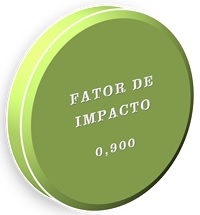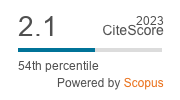Biocontrol of Pratylenchus zeae and sugarcane growth promotion by rhizobacteria
DOI:
https://doi.org/10.1590/1983-21252025v3812616rcKeywords:
Biological control, PGPR, Root-lesion nematode, Saccharum spp.Abstract
The root lesion nematode (Pratylenchus zeae) is one of the main phytosanitary problems of sugarcane, and the biological control is an important tool in the integrated nematode management. Thus, the objective of this study was to evaluate the potential of rhizobacteria in the biocontrol of P. zeae and their plant growth promotion (PGPR) in sugarcane. Seedlings of sugarcane ‘RB008347’ were microbiolized with individual suspensions of nine bacterial isolates in a greenhouse. After 15 days, the plants were transplanted to pots containing sterilized soil, and then were inoculated or not with 1000 specimens of P. zeae/plant under greenhouse conditions. Non-microbiolized seedlings inoculated or not with the nematode were used as controls. Ninety days after inoculation, each plant was evaluated for its development, number of nematodes/root system, nematode/g of roots and nematode reproduction factor. In an in vitro bioassay, the nematicidal activity of these bacteria on specimens of P. zeae was evaluated. Additionally, the bacterial isolates were characterized biochemically regarding production of compounds related to nematode biocontrol and PGPR. The majority of isolates promoted significant increases in the number of tillers, shoot fresh and root fresh mass, and suppressed P. zeae reproduction (48-74%) compared to the control. In the in vitro bioassays, the isolates XT23, XT26, XT51, XT56, XT37 and P17 showed nematicidal activity and produced at least one compound related to the biological control of phytonematodes and PGPR. In this way, the microbiolization of sugarcane seedlings with rhizobacteria demonstrates its effectiveness as a bionematicide and growth promoter for sugarcane crops.
Downloads
References
AGROFIT. Sistema de agrotóxicos fitossanitários. Ministério da Agricultura Pecuária e Abastecimento. Available at: <https://agrofit.agricultura.gov.br/agrofit_cons/principal _agrofit_cons>. Access on: Apr. 5, 2024.
BAKKER, A.W.; SHIPPERS, B. Microbial cyanide production in the rhizosphere in relation to potato yield reduction and Pseudomonas spp. mediated plant growth stimulation. Soil Biology and Biochemistry, 19: 451–457, 1987.
BARBOSA, B.F.F. et al. Agressividade de P. brachyurus à cana-de-açúcar, comparada ao do nematoide-chave P. zeae. Nematropica, 43:119-130, 2013.
BISOGNIN, A. C. Caracterização morfológica e agressividade de populações de Pratylenchus spp. do Rio Grande do Sul em cana-de-açúcar e manejo de phytonematodes na cultura pelo emprego de rhizobacteria, 2017. 93 f. Dissertação (Mestrado em Agronomia: Área de concentração Agricultura e Ambiente) - Universidade Federal de Santa Maria, Frederico Westphalen, 2017.
BRUM, D. Fitonematoides nas culturas do arroz irrigado e do morango: biocontrole, promoção de crescimento, agressividade de populações e reação de cultivares. 2017. 112 f. Dissertação (Mestrado em Fitossanidade: Área de concentração Fitopatologia) Universidade Federal de Pelotas, Pelotas 2017.
CARDOZO, R. B.; ARAÚJO, F. F. Multiplicação de Bacillus subtilis em vinhaça e viabilidade no controle da meloidoginose, em cana-de-açúcar. Revista Brasileira de Engenharia Agrícola e Ambiental, 15: 1283-1288, 2011.
CASTILLO, P.; VOVLAS, N. Pratylenchus (Nematoda: Pratylenchidae): Diagnosis, Biology, Pathogenicity and Management. BRILL, 2007. 529 p.
CHEN, S. Y.; DICKSON, D. W. A technique for determining live second-stage juveniles of Heterodera glycines. Journal of Nematology, 32: 117-121, 2000.
COOLEN, W. A.; D´HERDE, C. J. A method for the quantitative extraction of nematodes from plant tissue. State Agriculture Research Center - GHENT, Belgium. p. 77, 1972.
DINARDO-MIRANDA, L. L. et al. Biological control of phytoparasitic nematodes in sugarcane fields. Pesquisa Agropecuária Troical, 52: 1-7, 2022.
FAHY, P. C.; PRESLEY, G. J. Plant bacterial diseases - a diagnostic guide. Academic Press, San Diego. 393 p. 1983.
FERREIRA, R. J. et al. Bacillus species for controlling root-knot nematodes in development in sugarcane. Nematropica, 47: 106-113, 2017.
GORDON, S. A.; WEBER, R. P. Colorimetric estimation of indoleacetic acid. Plant Physiology, 26: 192-195, 1951.
HARNI, R; SUPRAMANA, S; SUPRIADI, S. Potential use of endophytic bacteria to control Pratylenchus brachyurus on Patchouli. Indonesian Journal of Agricultural Science, 13: 86-95, 2012.
KLOEPPER, J. W.; RYU, C. M.; ZHANG, S. Induced systemic resistance and promotion of plant growth by Bacillus spp. Phytopathology, 94: 1259-1266, 2004.
LANE, D. J. 16S/23S rRNA sequencing, p. 115-175, 1991. In: E. STACKEBRANDT; M. GOODFELLOW (Eds.). Nucleic acid techniques in bacterial systematics. Wiley, Chichester, United Kingdom.
LIAN, L. H. et al. Proteases from Bacillus: a new insight into the mechanism of action for rhizobacterial suppression of nematode populations. Letters in Applied Microbiology, 45: 262-269, 2007.
MARIANO, R. L. R.; SILVEIRA, E. B. Manual de práticas em fitobacteriologia. 2. ed. Recife, PE: UFRPE, 2005, 184 p.
MOURA, R. M. Manejo químico de phytonematodes em cana-de-açúcar. 2020. Avaliable at: <https://revistacultivar.com.br/artigos/ manejo-quimico-de-phytonematodes-em-cana-de-acucar>. Access on: Jun. 20, 2022.
NAUTIYAL, C. S. An efficient microbiological growth medium for screening phosphate solubilizing microorganisms. FEMS Microbiology Letters, 170: 265-270, 1999.
OKA, Y.; CHET, I.; SPIEGEL, Y. Control of the root-knot nematode Meloidogyne javanica by Bacillus cereus. Biological Science and Technology, 3: 115-126, 1993.
OOSTENBRINK, M. Major characteristic of relation between nematodes and plants. Mededelingen and Bouwhogeschool, 66: 1-46, 1966.
PACHECO, D. R. et al. Potencial de rhizobacteria no biocontrole de Meloidogyne javanica e na promoção de crescimento de plantas de cana-de-açúcar. In: CONGRESSO BRASILEIRO DE NEMATOLOGIA, 33, 2016, Petrolina. Anais… Petrolina: Embrapa Semi-Árido, 2016, p. 136.
RAZA, W.; YOUSAF, S.; RAYER, F.U. PGPR activity of volatile organic compound produced by biocontrole strains. Science Letter, 4: 40-43, 2016.
SIDDIQUI, I.A.; HAAS, D.; HEEB, S. Extracellular Protease of Pseudomonas fluorescens, a biocontrol factor with activity against the Root-Knot nematode Meloidogyne incognita. Applied and Environmental Microbiology, 71: 5646-5649, 2005.
SILVA, S. D. A. et al. Sistema de produção da cana-de-açúcar para o Rio Grande do Sul. 2016. Avaliable at: <https://www.embrapa.br/en/busca-de-publicacoes/-publicacao/1076589/ sistema-deproducao-de-cana-de-acucar-para-o-rio-grande-do-sul>. Acces on: Jul. 23, 2023.
SCHOEN-NETO. G. A. et al. Biological nematicides associated with biofertilizers in the management of Pratylenchus zeae in sugarcane. Revista Brasileira de Ciências Agrárias, 14: 1-7, 2019.
SUBEDI, P. et al. Current utility of plant growth-promoting rhizobacteria as biological control agents towards plant-parasitic nematodes. Plants, 9: 1167, 2020.
SUGUMARAN, P.; JANARTHANAM, B. Solubilization of Potassium Containing Minerals by Bacteria and Their Effect on Plant Growth. World Journal of Agricultural Sciences, 3: 350-355, 2007.
WILLE, C. N.; GOMES, C. B.; MOTA, M. Seleção de bactérias para controle biológico de Meloidogyne incognita em figueira. Revista de la Facultad de Agronomía, 118: 51-60, 2019.
Downloads
Published
Issue
Section
License
Os Autores que publicam na Revista Caatinga concordam com os seguintes termos:
a) Os Autores mantêm os direitos autorais e concedem à revista o direito de primeira publicação, com o trabalho simultaneamente licenciado sob a Licença Creative Commons do tipo atribuição CC-BY, para todo o conteúdo do periódico, exceto onde estiver identificado, que permite o compartilhamento do trabalho com reconhecimento da autoria e publicação inicial nesta revista, sem fins comerciais.
b) Os Autores têm autorização para distribuição não-exclusiva da versão do trabalho publicada nesta revista (ex.: publicar em repositório institucional ou como capítulo de livro), com reconhecimento de autoria e publicação inicial nesta revista.
c) Os Autores têm permissão e são estimulados a publicar e distribuir seu trabalho online (ex.: em repositórios institucionais ou na sua página pessoal) a qualquer ponto antes ou durante o processo editorial, já que isso pode gerar alterações produtivas, bem como aumentar o impacto e a citação do trabalho publicado (Veja O Efeito do Acesso Livre).







